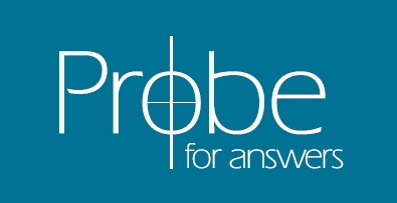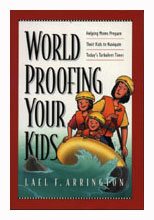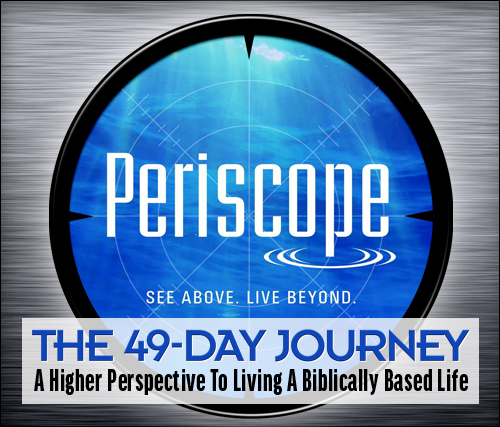Dr. Michael Gleghorn demonstrates how C.S. Lewis’s ‘That Hideous Strength’ illustrates the cosmic war of good and evil through supernatural spiritual warfare.
A Study in Contrasts
In this article we’re concluding a three-part series examining C.S. Lewis’s “Cosmic Trilogy.”{1} We’ve already looked at Out of the Silent Planet and Perelandra, which you can find on our website at Probe.org. Now we turn to That Hideous Strength, the third and final novel of the trilogy, originally published in 1945. In many ways, the story is a study in contrasts between two very different communities characterized by two very different worldviews.{2}
On the one hand there is the National Institute for Coordinated Experiments (or N.I.C.E.), which might initially appear to embrace a naturalistic worldview, but which is actually governed by a kind of pragmatism that accepts whatever is useful for advancing its own nefarious purposes. On the other hand, there is the community at St. Anne’s, which is generally animated by a Christian worldview.
Ransom, the hero of the first two novels, comes into this story as the “Head” or “Director” of St. Anne’s, and he’s a very different leader than the “Head” of the N.I.C.E. (as we’ll see later). Whereas the first two novels largely took place on Mars and Venus respectively, this story takes place on Earth, specifically in England, sometime after World War 2.{3}
That Hideous Strength is a long novel. It covers a lot of ground and deals with an incredible variety of ideas and issues. Because of this, we can only hit a few of the highlights here.
With this in mind, let’s begin by noticing two important statements on the book’s title page. First, the book’s subtitle: “A Modern Fairy-Tale for Grown-Ups.” This tells us something about the genre of the story. It’s intended as a kind of “fairy-tale.” But this is a “fairy-tale” for grown-ups. And indeed, much of this novel would be inappropriate for children.
Second, there’s a quotation from the 16th century Scottish poet, Sir David Lyndsay. In fact, the title of Lewis’s book is taken from this quotation, for Lyndsay mentions “that hyddeous strength” with reference to the Tower of Babel, a story originally told in Genesis 11. The Tower of Babel, you may recall, was a monument to human pride and rebellion against the Lord. In response, the Lord came down in judgment and confused the languages of those building the tower, and they were subsequently scattered over the face of the earth.
If we are to correctly interpret Lewis’s novel, then, we must not lose sight of these two clues. Lewis intends this story as a kind of modern-day “fairy-tale” that, in one way or another, also alludes to something like the Tower of Babel.
Supernatural Influences
Above, I mentioned Lewis’s subtitle for the novel: “A Modern Fairy-Tale for Grown-Ups.” This, I said, tells us something about the genre of the story. Lewis intended the story as a kind of fairy-tale. But what are fairy-tales, and how might this help us interpret Lewis’s novel?
On the English-Studies website, we learn that fairy-tales “are types of literature . . . featuring magical elements, mythical creatures, and moral lessons. Characterized by simple . . . characters, these stories typically involve a protagonist overcoming challenges with the help of magic or supernatural aid.”{4} As we’ll see, this description fits Lewis’s novel fairly well.
Consider, for example, the concluding statement about “overcoming challenges with the help of magic or supernatural aid.” In Lewis’s novel, Ransom and the community at St. Anne’s overcome the challenges posed by the National Institute of Coordinated Experiments (or N.I.C.E.) with help both magical and supernatural. From the depths of Arthurian legend, Merlin the magician returns to lend his aid to St. Anne’s. Moreover, the community is also helped by powerful angelic authorities who can best be described as something like a cross between Christian archangels and Roman gods or goddesses.{5} Hence, Mercury, Venus, Mars, Jupiter, and Saturn all descend from the heavens to help the community in its time of need.
And this helps us see an important contrast between St. Anne’s and the N.I.C.E., for it turns out that both are receiving a kind of supernatural aid, though the source of that aid is very different. The Christian community at St. Anne’s is receiving supernatural aid from loyal, angelic, servants of God. The N.I.C.E., however, is receiving aid from dark spirits, who are in rebellion against God. The leaders of the N.I.C.E. refer to these spirits as “macrobes,” and recognize that they are “more intelligent than Man.”{6} While the good spirits communicate to the company of St. Anne’s through Ransom, the “Head” of that community, the evil spirits communicate to the leaders of the N.I.C.E. through the decapitated “Head” of a former criminal, which is being artificially preserved in a laboratory. We thus begin to see how the contrasting worldviews of these two communities have led them into very different spiritual alliances.
Science and Magic
One of the strangest aspects of C. S. Lewis’s novel, That Hideous Strength, concerns the return of Merlin to help the community of St. Anne’s in their battle against the National Institute of Coordinated Experiments (or N.I.C.E.). Stranger still is the fact that the leaders of the N.I.C.E. initially hope to recruit Merlin to their own side in this struggle. But isn’t the N.I.C.E. a scientific institute? Why would its leaders want to enlist the aid of an enigmatic magician from the days of King Arthur? It would seem that the governing principles of the N.I.C.E. are really rather different from what one might expect from a scientific institute.
Consider, for example, the character of William Hingest. Lewis describes him as “a physical chemist” and one of only two men at his college “who had a reputation outside England.”{7} Hingest is a true scientist. But when he visits the N.I.C.E. to find out more about it, he quickly decides to leave. As he tells Mark Studdock, another character in the novel, “I came here because I thought it had something to do with science. Now that I find it’s something more like a political conspiracy, I shall go home.”{8}
Hingest realizes that the N.I.C.E. is quite different from a scientific institute. He rightly senses that there is something dark and corrupt at the institute’s core. As readers, we learn that the leaders of the N.I.C.E. are actually taking orders from demonic spirits. They want to recruit Merlin because they hope to make use of his powers to advance their own agenda. What they fail to realize, however, is that in the world of Lewis’s novel, Merlin is a Christian, and he joins forces with the company at St. Anne’s.
In his book, The Abolition of Man, Lewis described the birth of magic and applied science as “twins.” Both desired “to subdue reality to the wishes of men,” but only science was successful.{9} In Lewis’s novel, however, the leaders of the Institute have stumbled upon a source of power that might arguably trump that of science, namely, the demonic “macrobes.” They want Merlin because he will increase their power still further. The leaders of the N.I.C.E. are not really interested in truth, beauty, or goodness, but only in the power “to subdue reality” to their own wishes. Like the ancient builders of Babel, they are in prideful rebellion against the Lord. And this is why, in Lewis’s “fairy-tale” novel, their work also must be destroyed.{10}
The Problem of Violence
C. S. Lewis’s novel, That Hideous Strength, has often been criticized for its alarming depictions of violence. Near the end of the novel, when the leaders of the National Institute of Coordinated Experiments (or N.I.C.E.) are destroyed by Merlin and the heavenly powers, Lewis describes their deaths in rather grisly detail. Some are trampled and torn apart by wild animals, others are shot or decapitated, and one character chooses to be incinerated by his own hands.{11} Why does Lewis include such horrific scenes?
David Downing has a good discussion of this issue in his book, Planets in Peril: A Critical Study of C.S. Lewis’s Ransom Trilogy. He first observes that “Lewis was writing” this novel “during the bleakest years of World War II and that he draws explicit parallels between the leaders of N.I.C.E. and the Nazis.”{12} He notes that, like the Nazis, the N.I.C.E. also rely upon a “secret police” force. Like the Nazis, they too “control the press . . . use criminals for barbaric medical experiments” and “dream of creating a master race.” Hence, just as it was necessary for the Allies to fight and defeat the Nazis, so also it is necessary for Ransom, Merlin, and the heavenly powers to fight and defeat the N.I.C.E.
But was it necessary for Lewis to describe the deaths of his villains in such “gruesome detail”?{13} Why not simply have the angelic-god Jupiter destroy the leaders of the N.I.C.E. with a well-aimed thunderbolt? Why does Lewis insist on narrating their deaths in such graphic terms? Downing argues that Lewis was using Dante’s Inferno as a “subtext” for this novel.{14} He shows how the journey of Mark Studdock (a major character in the novel) into the heart of the N.I.C.E. parallels Dante’s journey through the nine circles of hell.{15} As Downing observes, the leaders of the N.I.C.E. joined forces with dark spirits. They thus experience a dark end to their earthly pilgrimage.{16}
The violence in That Hideous Strength makes more sense when we remember the comparisons Lewis makes between the N.I.C.E. and the Nazis, as well as the many literary connections between his own story and Dante’s Inferno. Moreover, we must not forget that such violence fits in rather well with Lewis’s description of the story as a kind of “fairy-tale.” Fairy tales, after all, often have a dark side, and Lewis’s tale is no exception.
Babel and the Word of God
C. S. Lewis intended the final novel of his “Cosmic Trilogy,” That Hideous Strength, to be read as a kind of fairy tale with allusions to the biblical Tower of Babel. We’ve mentioned several ways in which Lewis’s novel resembles a fairy tale, but we’ve said little about its allusions to the Tower of Babel. Although Lewis draws several connections between the National Institute for Coordinated Experiments (or N.I.C.E.) and the Tower of Babel, we here have time to mention only a couple.
The story of the Tower of Babel occurs in Genesis 11. In that story, all humanity speaks the same language, and they determine to build “a city and a tower with its top in the heavens” (Genesis 11:4). They do this in order to “make a name” for themselves. But the Lord, who has told humanity to “fill the earth” (Genesis 9:1), comes down and confuses their language, thus dispersing them throughout the world (Genesis 11:8-9).
Like the builders of Babel, the leaders of the N.I.C.E. also want to “make a name” for themselves. The N.I.C.E. aims to achieve something like the deification of humanity, though this will only be accomplished by the destruction of virtually everything that makes human life worthwhile (and only a few, and eventually perhaps just one person, will be the beneficiary of their evil schemes).{17} For this reason, God permits some of His loyal servants, the Heavenly Powers, to descend to earth and bring linguistic confusion to the leaders of the N.I.C.E., thus forcing them to abandon their project.{18}
Merlin the magician, who has joined forces with Ransom and the community at St. Anne’s, is the human instrument through which the Heavenly Powers work to release the “curse of Babel” upon the N.I.C.E. The leaders of this institute have joined forces with dark spirits to achieve their ends. Hence, once the “curse of Babel” is in full force among them, Merlin 7calls out over the din of confusion: “They that have despised the word of God, from them shall the word of man also be taken away.”{19} The inability of the leaders of the N.I.C.E. to understand one another plays a significant role in ending their tyranny, thus saving humanity from their evil intentions.
In That Hideous Strength, Lewis has contrasted two very different communities, with two very different worldviews. Presented as a kind of fairy-tale, with allusions to the biblical Tower of Babel, he has developed an intriguing story about the ongoing battle between good and evil.
Notes
1. Wayne Shumaker uses this terminology in the title of his essay, “The Cosmic Trilogy of C. S. Lewis,” in The Longing for a Form: Essays on the Fiction of C. S. Lewis, ed. Peter J. Schakel (Kent State University Press, 1977), 51-63.
2. See Richard L. Purtill, “That Hideous Strength: A Double Story,” in The Longing for a Form, 91-102, for an excellent treatment of this issue.
3. C. S. Lewis, That Hideous Strength: A Modern Fairy-Tale for Grown-Ups (New York, NY: Macmillan, 1965), 7.
4. See English Studies, “Fairy Tale: A Literary Genre,” English Studies, english-studies.net/fairy-tale-a-literary-genre/#google_vignette (accessed October 29, 2024).
5. I discuss this issue in my first program on the trilogy: “Smuggling Theology into Out of the Silent Planet,” which you can find here: Smuggling Theology into Out of the Silent Planet
6. Lewis, That Hideous Strength, 257.
7. Ibid., 56.
8. Ibid., 70.
9. C. S. Lewis, The Abolition of Man (New York: Macmillan, 1955), 87-89.
10. Lewis, That Hideous Strength, 293-94.
11. Ibid., 343-358. See the chapter, “Banquet at Belbury.”
12. All the quoted material in this paragraph can be found in David Downing, Planets in Peril: A Critical Study of C.S. Lewis’s Ransom Trilogy (University of Massachusetts Press, 1995), 152.
13. Ibid.
14. Ibid., 94.
15. Ibid., 94-99.
16. Ibid., 99.
17. See Lewis, That Hideous Strength, 176-80.
18. Ibid., 320-58.
19. Ibid., 351. In the story, Merlin says this in Latin, but there is a translation in the footnote on this page.
©2025 Probe Ministries












